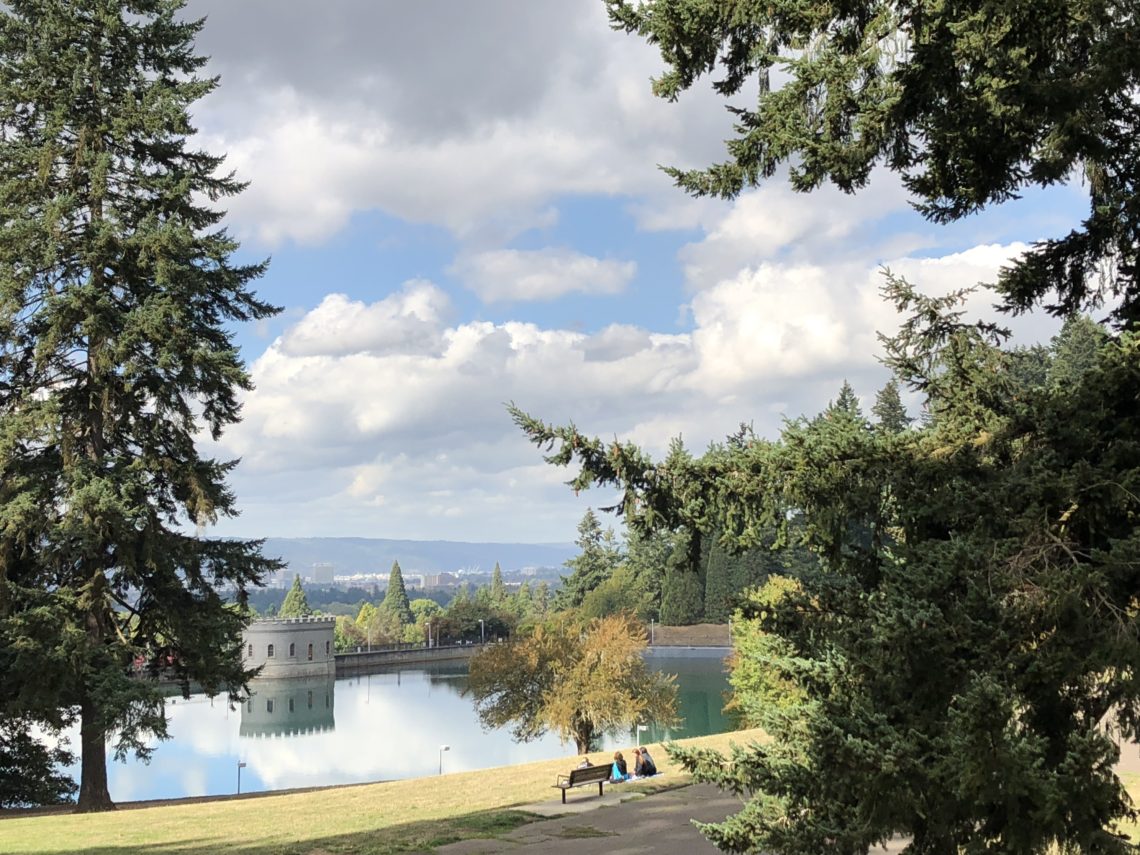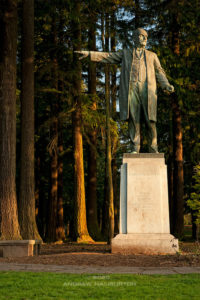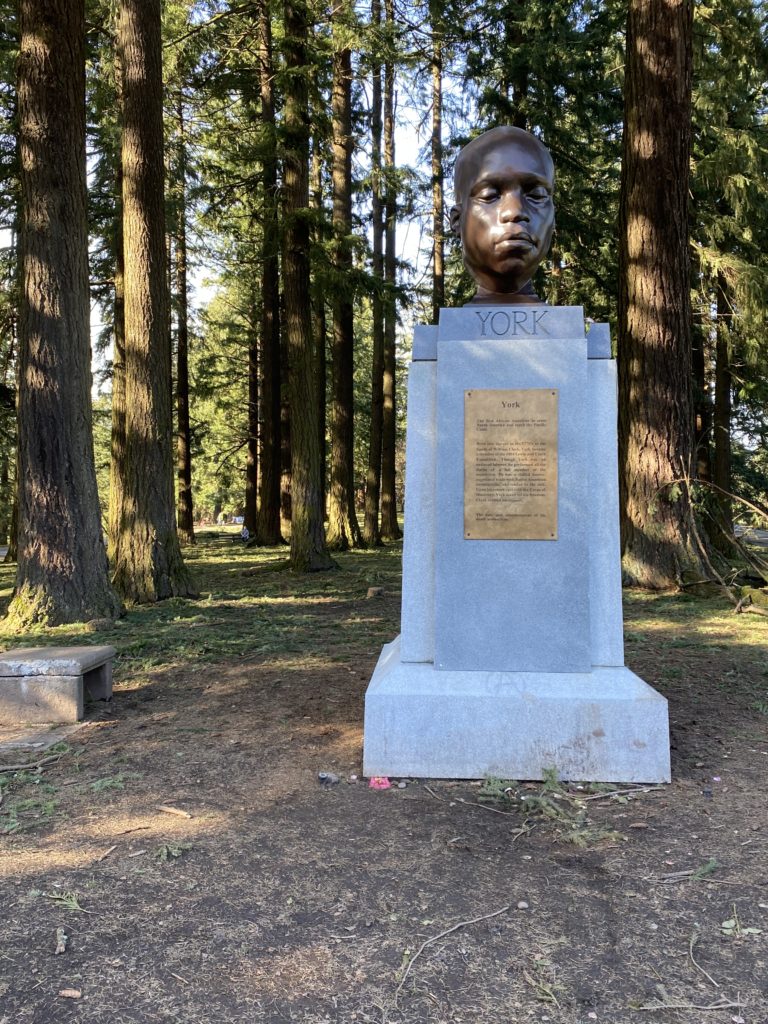
Good Trouble and Good Change on Mt. Tabor.
In the summer hub-bub around here, a lot of statues of old guys were toppled. I didn’t care. I figured, if students felt that strongly about the old guy statue at their high school, well then at least they had the gumption to pull it down. This happened over and over in Portland this summer and not just at high schools.
Since 1933, at the top of Mt. Tabor park (a crown jewel in our city park system), there has stood a statue of Harvey Scott, a pioneer and editor of The Oregonian from the 1870s through the early part of the 20th century. In October 2020 the Scott statue became another casualty in the protests against racial injustice.

I know very little about Harvey Scott, a local paper reported he had been a vocal opponent of women’s suffrage. I also read he was not a supporter of free public schools and held “outdated social theories”. If you check out Scott’s photos in his Wikipedia entry, he certainly sports a grumpy look and there is information indicating Scott’s scholarship and character were over-estimated.
But recently (a good guess is February 17, 2021) and out of nowhere a new statue appeared where Scott’s once stood. It is a bust of York, an enslaved man who was the first African American to cross North America as part of the Corps of Discovery. On the plaque beneath the statue this information is given about his life:
York was born into slavery in the 1770’s to the William Clark family and in 1804 York joined the Lewis and Clark Expedition. Though York was an enslaved laborer, he performed the duties of a full member of the expedition. Upon his return east with the Corps of Discovery, York asked for his freedom. Clark refused his request.
Someone asked me once if I could describe the difference between living in a blue state versus living in a red one. I replied, “the conversations are different and usually start at a different place.” And please do not think that by different I meant better.

Here is the press release from Portland’s City Parks Commissioner in regards to the pop-up statue of York. “We should regard this installation for both the important piece that it is as well as a much-needed reminder to city leaders to hasten our work of rooting out white supremacy in our institutions—particularly our city government, where many processes exclude community participation and discourage engagement.”
The director of Portland Parks & Recreation claims the artwork as “a complete surprise,” but says that if the monument is determined safe for public viewing, it will remain in place. I am not buying the “complete surprise” comment. It took a good amount of planning and work to secure York on his pedestal and attach the plaque at the top of the park. But I am proud of our local government employees who dared to be involved in a good-trouble action and cover-up.
Today was a lovely day. The sun was out in full force and I wanted to see the tribute to York. I took a walk through the park and it was magnificent and uplifting to be among so many people out biking, running, and stretched out like starfish on picnic blankets making up their Vitamin D deficiencies. (It has been a long grey pandemic winter).
Around the York statue, small groups of people had gathered, they were talking in hushed voices, taking pictures, and one man stood in front of York with folded hands, chanting. I felt twice-warmed in that spot, in the midst of all the good murmuration.
Harvey Scott died unexpectedly in Baltimore, Maryland following a surgery (so says Wikipedia) in August 1910. He was 72 years old.
On York’s plaque it is noted the date and circumstance of his death is unknown.
It is good change, that statue change up on Mt. Tabor.
I hope now after summer 2020, after our Summer of Trouble and Pandemic, we can come out on the other side and begin again on many things, including a start down a righteous and truthful path as we recite our histories.

